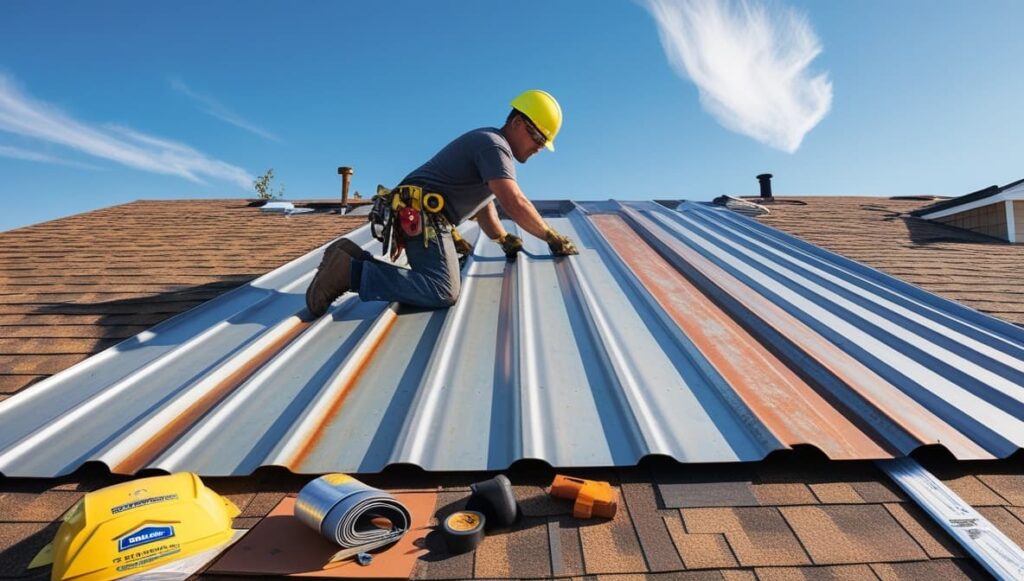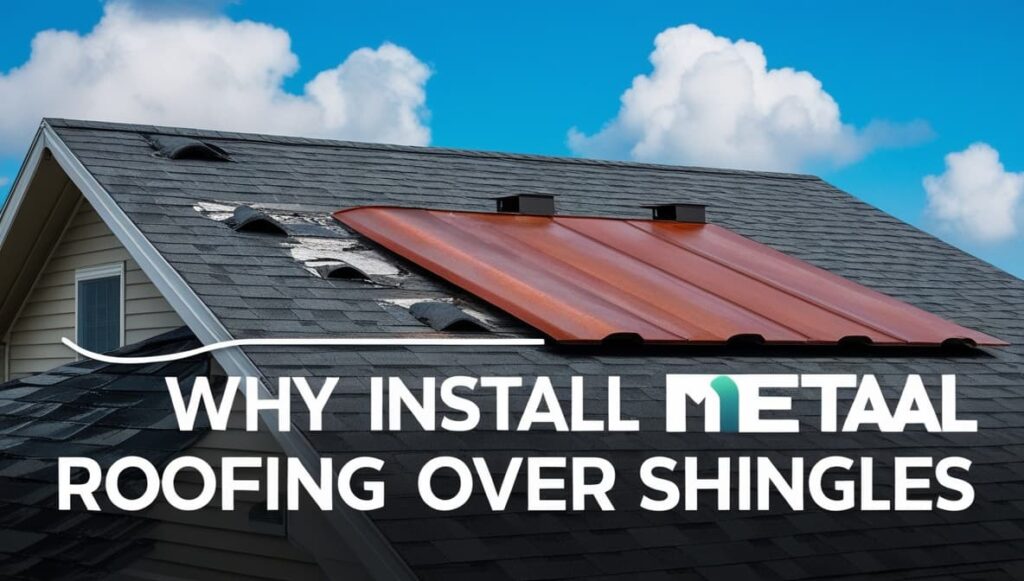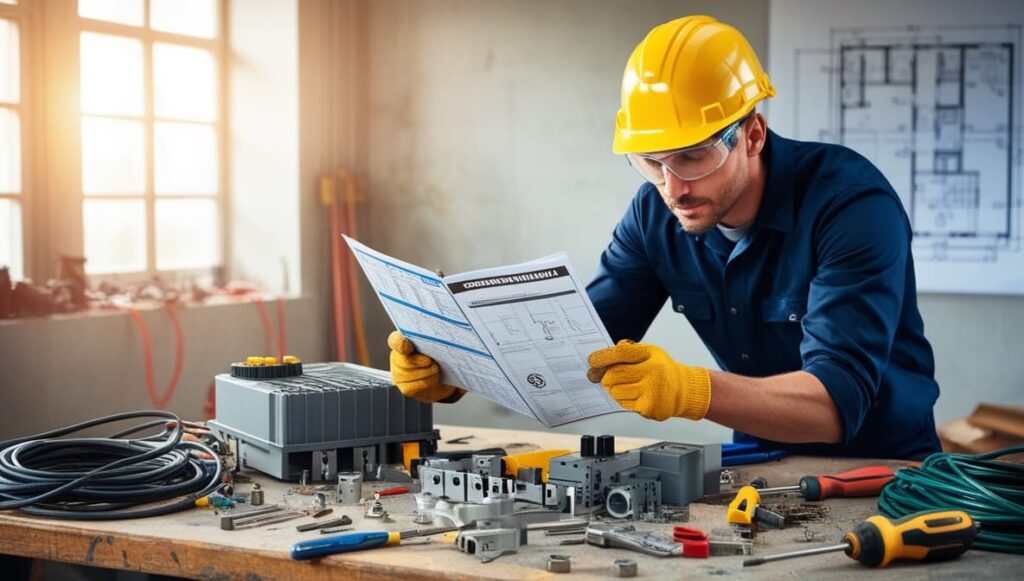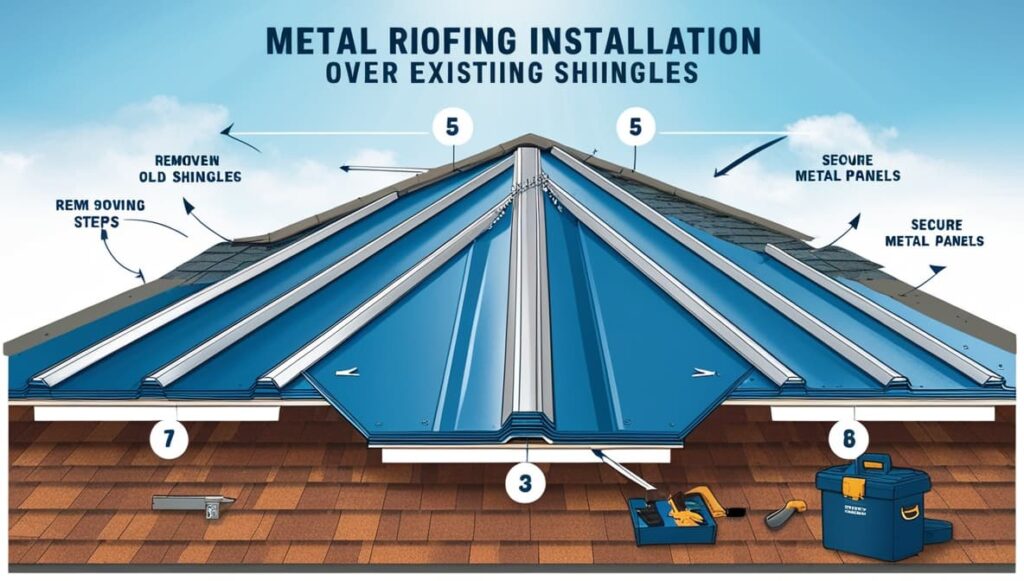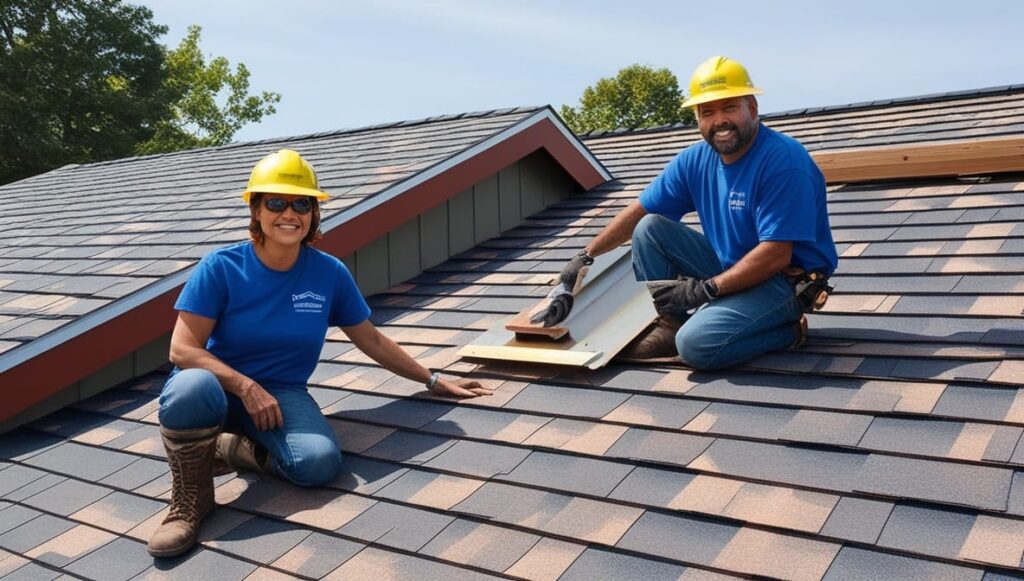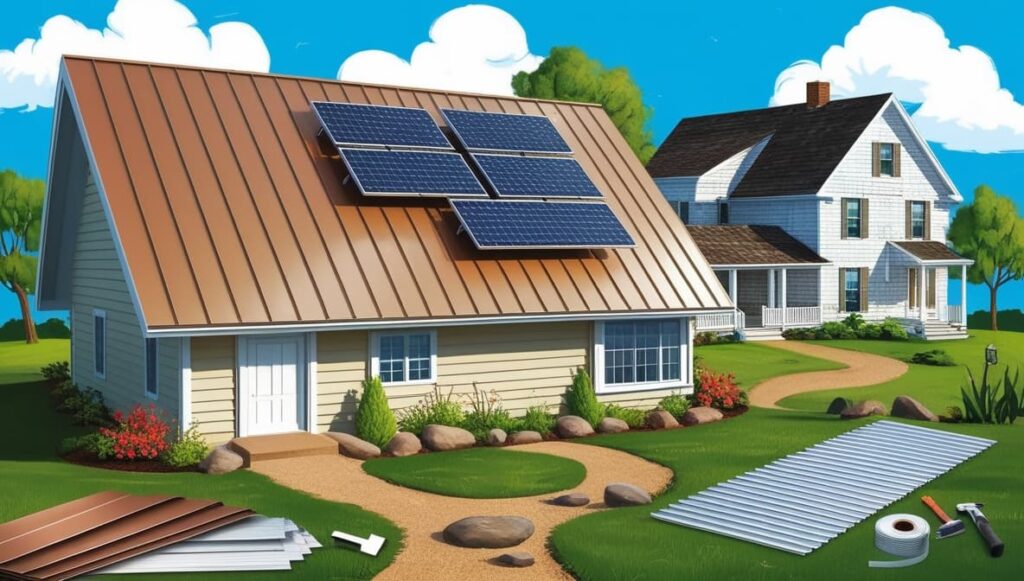Roofing
How to Install Metal Roofing Over Shingles: Save Big Now!
How to Install Metal Roofing Over Shingles? Imagine standing outside, looking at your roof, and wondering. Do I really need to go through the hassle of tearing off all these shingles to get a new roof? The good news is, you don’t have to!
For many homeowners and contractors, learning how to install metal roofing over shingles opens up an easier, cost-effective, and durable way to upgrade roofs.
Picture a homeowner who’s tired of replacing shingles every few years or a contractor aiming to save time for their clients. Metal roofing over shingles is the perfect solution. Let’s explore this process step by step with relatable scenarios and actionable advice.
1. Why Install Metal Roofing Over Shingles?
1.1 Benefits of Metal Roofing
Meet Raj, a homeowner frustrated with his aging shingle roof that leaks every rainy season. He decided to install a metal roof and hasn’t looked back. Why? Metal roofing lasts over 50 years, giving Raj peace of mind knowing he won’t need to worry about his roof for decades.
Metal roofs last over 50 years, making them a long-term investment. Understanding how to install metal roofing over shingles allows homeowners to upgrade their roofs without the hassle of frequent replacements.
Metal roofs are not just durable; they’re also eco-friendly. Raj chose recycled materials for his roof, and he’ll recycle them again when it’s time for a replacement.
He also saved money by skipping the tear-off process and loved the variety of colors and styles metal roofing offers, which boosted his home’s curb appeal. Want a roof upgrade like Raj? Start here: Click here
1.2 Limitations of Shingles
Let’s look at another scenario. Susan, a business owner, grew tired of the constant maintenance and replacements required for her shingle roof. Every repair disrupted her cafe’s operations and added to her costs.
When she learned shingles often end up in landfills, she felt even worse about the environmental impact. That’s when Susan decided to switch to metal roofing, avoiding further waste and cutting her long-term expenses.
2. Preparing for Installation
Proper preparation is critical before installing metal roofing over shingles. Raj’s story highlights the importance of a thorough roof inspection and compliance with local building codes. Let’s break it down.
2.1 Roof Inspection
Raj initially considered inspecting his roof himself but wisely decided to hire a professional. His contractor examined the shingles for curling, cracks, and signs of wear, ensuring they were in good enough condition to support a metal roof.
Damaged or deteriorating shingles would have needed repairs or removal, as they could compromise the stability of the new roof.
The inspection also included the roof deck, a crucial foundation for any roofing project. The contractor checked for water damage, fire exposure, and weak spots that could cause structural issues later.
Raj learned that a stable, sturdy roof deck is essential for a successful metal roofing installation. Without this critical foundation, even the most durable metal roof would be at risk of failure.
2.2 Addressing Code Requirements
After the inspection, Raj confirmed his project complied with local building codes. Many areas limit roofs to two layers of materials, and exceeding this can result in fines or safety hazards. Raj worked with his contractor to verify compliance, avoiding potential complications.
Skipping this step could have derailed the entire project. Raj’s proactive approach saved time, ensured legal compliance, and provided peace of mind that his new roof met all necessary standards. Don’t want to risk climbing up a ladder yourself? Hire a trusted expert today: Click here
3. Methods for Installing Metal Roofing Over Shingles
Installing metal roofing over shingles can be achieved through various methods, each with unique benefits and trade-offs. Let’s explore three common approaches and how Susan and Raj navigated their choices.
3.1 Using Furring Strips
Susan’s contractor chose to install her metal roof using furring strips, a reliable method that adds ventilation and extends roof life. Horizontal wooden battens were attached directly to her shingles, creating a gap between the shingles and metal panels.
This gap allowed air to circulate, reducing moisture buildup and preventing issues like condensation. Over time, this ventilation helps maintain the integrity of the roof and prevents potential damage from trapped moisture.
While this method requires additional materials and labor, the benefits outweigh the costs for homeowners like Susan. Furring strips cost approximately $1-2 per square foot, while underlayment felt, often added for extra moisture protection, costs about $0.30 per square foot.
| Material | Approx. Cost | Purpose |
|---|---|---|
| Wood Battens | $1-2/sq. ft. | Creates ventilation gap |
| Underlayment Felt | $0.30/sq. ft. | Moisture barrier |
3.2 Direct Attachment to Shingles
Direct attachment is a budget-friendly option often considered by homeowners like Raj. In this method, metal panels are installed directly over shingles with a layer of underlayment.
While it saves money and time, it has downsides. Reduced ventilation can lead to moisture issues, and surface imperfections may appear on the metal panels over time.
Raj ultimately chose furring strips for their long-term benefits, but direct attachment remains a viable option for those on tight budgets.
3.3 Shingle Recover Systems
Susan’s contractor also introduced her to shingle recover systems, an advanced solution with built-in ventilation and symmetrical panels.
These systems simplify installation and future maintenance by allowing individual panel replacement without disrupting the entire roof.
While this method is more expensive upfront, it’s an excellent choice for commercial properties like Susan’s café, where durability and efficiency are critical. Ready to choose the right method for your roof? Click here
4. Step-by-Step Installation Process
Installing metal roofing over shingles involves three critical steps: preparing the foundation, attaching the metal panels, and sealing the roof. Let’s explore how Raj and Susan completed this process with their contractors.
4.1 Install Underlayment or Furring Strips
The first step is to create a stable base for the metal panels. In Raj’s case, his contractor chose to lay underlayment directly over his shingles.
This moisture-absorbing layer acted as a barrier against water and reduced the risk of leaks. Underlayment is also a lightweight and cost-effective option, making it ideal for homeowners with limited budgets.
Susan’s contractor, on the other hand, opted for furring strips. These horizontal wooden battens were added across her roof to create a ventilation framework.
This approach allowed airflow beneath the metal panels, reducing moisture buildup and increasing energy efficiency. Both methods ensured a strong, reliable foundation.
4.2 Attach Metal Panels
With the foundation in place, the next step was attaching the metal panels. Raj’s contractor carefully aligned each panel, securing them with screws while ensuring the seams were symmetrical.
This attention to detail gave the roof a clean, polished appearance and reinforced its durability.
4.3 Seal the Roof
Finally, the contractor sealed all seams using closure strips and added flashing along the roof edges. To prevent water penetration, rubber grommets covered the screws.
This ensured Raj and Susan’s roofs could withstand heavy rain and storms, providing long-term protection. Ready to start your project? Find the best materials here: Click here
5. Key Considerations and Challenges
When installing metal roofing over shingles, careful planning can help avoid common challenges. Raj and Susan faced key concerns, which their contractors resolved with simple yet effective solutions.
Weight Concerns:
Raj worried about the combined weight of metal roofing and shingles. Although metal is lightweight, older structures can face strain from the added load.
His contractor inspected the trusses and beams to confirm they could handle the extra weight. If the structure had shown weakness, reinforcements would have been added to prevent sagging or long-term damage.
Cost of Installation:
Susan focused on balancing quality and cost. Metal roofing installations range from $15,000 to $60,000 depending on material and size.
By choosing galvanized steel, a budget-friendly yet durable option, she saved significantly. Additionally, avoiding shingle tear-off costs reduced her total expense.
Noise Levels:
Both were concerned about noise during storms. Contractors explained that the existing shingles act as insulation, reducing interior noise significantly. Adding underlayment provides further soundproofing if needed.
Permit Requirements:
Securing permits saved both homeowners from legal issues. Raj’s contractor handled this step, while Susan verified her commercial building’s compliance.
By addressing these challenges proactively, homeowners can confidently proceed with their projects and fully benefit from learning how to install metal roofing over shingles for long-lasting protection and value
Carefully addressing these considerations ensures a smooth installation and long-lasting benefits. Need help navigating these challenges? Start here: Click here
6. Benefits of Installing Metal Roofing Over Shingles
Installing a metal roof over shingles offers an array of benefits that go beyond just protecting your property. For Raj and Susan, the decision transformed not only their homes but also their peace of mind.
Let’s dive deeper into why this approach is a game-changer for both homeowners and business owners.
Avoiding Costly Tear-Offs
One of the most immediate benefits Raj and Susan experienced was the elimination of tear-off costs. Traditional roofing projects often involve removing old shingles, which incurs significant labor expenses and disposal fees.
By opting to install metal roofing directly over shingles, both avoided these extra costs while also saving time during the installation process. For anyone on a budget, this approach is a smart, cost-effective solution.
Reducing Waste
Environmental sustainability played a key role in Susan’s decision. Disposing of old shingles creates landfill waste that contributes to environmental degradation.
By keeping the existing shingles intact and adding metal roofing on top, they minimized waste production. Metal roofs, made from recyclable materials, further supported their eco-friendly goals, making this approach a greener alternative.
Extending Roof Lifespan
For Raj, durability was a priority. Metal roofing typically lasts over 50 years, far surpassing the lifespan of shingles, which generally need replacement every 15-20 years.
Installing a metal roof over shingles provided double-layered protection, significantly extending the overall lifespan of his roof. The shingles acted as an additional barrier, enhancing the roof’s resistance to weather and external damage.
Minimizing Noise During Storms
Stormy nights were a concern for both Raj and Susan before their upgrade. Metal roofs, though durable, are known for amplifying noise during rain or hailstorms.
However, the existing layer of shingles beneath their metal roofs acted as insulation, dampening noise levels and making their homes quieter and more comfortable. This unexpected benefit turned stormy nights into peaceful evenings, improving the overall quality of life.
Adding Thermal and Energy Efficiency
While not immediately obvious, installing metal roofing over shingles improved the thermal efficiency of their homes. The gap created by furring strips or the added layer of shingles reduced heat transfer, keeping their interiors cooler in summer and warmer in winter.
For Susan, this translated into lower energy bills, further maximizing the value of her investment.
Boosting Aesthetic Appeal
Both Raj and Susan appreciated the visual transformation. Metal roofing offers a range of styles, textures, and colors, allowing homeowners to customize their roof’s appearance.
For Raj, the sleek modern look of his roof added to his home’s curb appeal. For Susan’s café, the new roof became an eye-catching feature that drew customers and created a positive impression. Upgrade your roof like Raj and Susan. Start today: Click here
Conclusion
By installing metal roofing over shingles, you’re choosing a solution that combines efficiency, cost-effectiveness, and long-term reliability.
This method not only eliminates the time and expense associated with tearing off old shingles but also adds an extra layer of protection to your roof.
The added durability of metal roofing, with its lifespan of over 50 years, ensures peace of mind for decades, reducing the need for frequent repairs or replacements.
For homeowners like Raj, this means fewer worries about weather damage and maintenance, freeing up time and resources for other priorities.
Metal roofing provides the perfect balance of strength and style, with options that enhance a home’s curb appeal. It’s a practical investment for anyone who values longevity and aesthetics.
For business owners like Susan, metal roofing offers sustainability and cost savings. The ability to avoid landfill waste from shingle disposal aligns with eco-conscious goals, while the reduced energy costs from better insulation improve the bottom line.
Metal roofing over shingles ensures business operations continue smoothly without disruptions from major roof repairs or replacements.
Whether you’re a homeowner or a business owner, metal roofing over shingles is a forward-thinking solution that pays off in multiple ways.
Don’t just upgrade your roof—transform it into a lasting investment that works as hard as you do. Are you ready to take the leap toward a more durable, sustainable roof? Share your thoughts and experiences below!
Frequently Asked Questions
1. Can you install over damaged shingles?
A. No, damaged shingles need to be repaired or removed to ensure a stable foundation.
2. Is underlayment necessary?
A. While not mandatory, underlayment adds protection against moisture and enhances roof durability.
3. What are the disadvantages?
A. Potential challenges include added weight and noise during heavy rainfall.
Have more questions? Find answers here: Click here
Recent Posts
- What is a Square in Roofing? The Basics of Roofing Measurements
- Roof Condensation Solutions: Effective Fixes for a Safer Home
- Roofing and Cladding Essentials – Don’t Miss Out!
- Wind Damage Repair: Essential Steps and Costs
- Hail Damage Assessment: A Step-By-Step Guide for Homeowners

